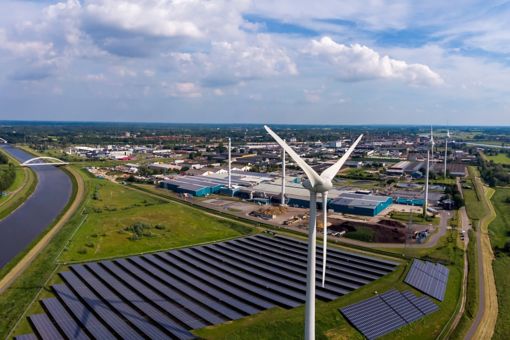By: John Arp, Managing Director, Chemicals Strategy, KPMG in the US; Vijay Balasubramanian, Managing Director, KPMG in the US; David Hill, Partner, Deal Advisory, KPMG in the UK; Ed Middleton, Partner, Energy and Natural Resources and Private Equity, KPMG in the UK and Marc Summers, Partner, EMEA Chemicals Deal Advisory Leader, KPMG in the UK
The past few years have been turbulent for almost every business sector. The COVID pandemic gave way to dramatically rising costs and spiraling inflation, fueled by the economic ripple effects of the Russia/Ukraine conflict. The chemicals industry has been heavily impacted by many of these factors, particularly the volatile effects on the price of oil and gas.
Following a post-pandemic spike in 2021, the global economy slowed through 2022 – with most major economies expected to see only modest growth or even contraction in 20231. This has significantly affected businesses and economies worldwide, with the period of slow growth expected to continue until at least 2024.2
In line with other sectors, the chemicals industry is braced for what could be a tough year. While there have been some notable deals, and a handful of sizeable transactions could come to fruition and boost wider market confidence, overall, the pipeline of activity has thinned, and the outlook remains subdued.
The chemicals business outlook
Before diving deeper into the M&A prognosis, it is worth first assessing the business conditions the chemicals industry will likely encounter this year for context. Some of the KPMG chemicals leadership team recently attended the World Petrochemical Conference in Houston. It was clear from the ‘mood in the room’ amongst industry leaders that 2023 will likely to be challenging. Unlike previously anticipated conditions in 2022, today's leaders expect the conditions to remain 'lower for longer,' with no top-line growth for the year as the probable best-case scenario.
It is not difficult to see why they feel this way. As per the IMF’s forecast, major economies like the US and the Eurozone are expected to see a fall in growth this year compared to 2022. Some economies like the UK and Germany are predicted to see a contraction. Even China is only expected to achieve 5.2 percent growth, albeit this would be almost a doubling of the rate of growth it achieved in 2022 when it was still in the grip of COVID lockdowns.3
With chemicals businesses so dependent on activity and demand in other sectors, a general slowdown spells a similar story for the industry.
Working with preliminary data, an analysis that KPMG professionals have conducted of chemicals business performance in the US in Q4 of 2022 – which is believed to be indicative of the industry across major regions – appears to bear out this downbeat trend. Amongst public North American companies that disclose price and volume data, this analysis finds that while there was an overall 8 percent increase in organic sales compared to the same period a year previously, this was due to price increases, not higher volumes. Driven by inflation, prices rose by an average of 15.7 percent – while volumes fell by -7.7 percent. The volume declines were broad-based – of the 41 companies that broke out sales increases by price and volume, 35 reported declines in volumes.4
As per the IMF’s forecast, major economies like the US and the Eurozone are expected to see a fall in growth this year compared to 2022.

There are likely several reasons for these weak volume numbers, including:
- Inflation and the attendant inverse correlation between price and demand
- A broader pullback across the economy, capital discipline, and focus on working capital management
- Key end-use markets in construction and automotive continue to face volatility and uncertain demand. KPMG’s global automotive survey finds that 76 percent of leaders are concerned that inflation and high interest rates will adversely affect their business in 20235, while in the construction industry, the after-effects of Covid-19 are still apparent, with 45 percent of respondents to KPMG’s Global Construction Survey saying they’ve experienced a pandemic-related schedule delay or cost impact of more than 20 percent6. Nevertheless, better conditions are expected at the end of the year, which could create an uplift in output and volumes.
- Anecdotal evidence from conversations with industry participants during the World Petrochemical Conference in March who have said their customers over-ordered earlier in the year to get ahead of potential supply chain disruptions only to find themselves sitting on excess inventory.

KPMG professionals’ analysis shows that certain sub-sectors are more affected than others. For example, titanium dioxide (TiO2) has suffered more than most, perhaps because demand from building and construction has dropped. Coatings and adhesives, while being further downstream, experienced much smaller declines in volume. There are specific nuances within thedata and an interplay of numerous factors. But the overall message is that the more specialized or differentiated a business’ products are, the more they are insulated. However, that insulation is relative, given that the overall picture is one of demand decline.

Deals market forecast
Prevailing headwinds
Turning to the deals landscape specifically, these conditions are expected to produce a subdued market — although activity could pick up quickly again at short notice, and preparedness will be essential. Companies that have managed to take a long-term focus and have their finances in order will be well-positioned to take advantage of the opportunities that will arise.
KPMG’s analysis of the global chemicals M&A market shows that activity is moving on a downward trend7:

This analysis shows a consistent deal drop-off across all sectors starting in Q3 2022. Commodity chemicals, agricultural and fertilizers, and specialty chemicals have all seen deal value and volume falls. There has also been reduced Private Equity (PE) activity due to economic conditions and the cost of financing.
There are various headwinds holding activity back. It has been challenging to stimulate buyer appetite for big transformational deals due to the increased cost of debt as interest rates have risen, together with the general perception that market conditions have become unfavorable. There has been a shortage of big buyouts, and debt raises, with investor appetite low and pricing high. Performance has been a key factor: companies for sale are struggling to meet the projections laid out in marketing materials, while buyers have become more cautious and skeptical of seller projections.
Enabling factors
However, it is not all gloom. As noted, there have still been some significant deals, and from conversations we have had with industry leaders, more sizeable acquisitions could be on the horizon. These could kickstart increased market confidence and activity. Several players have assets they want to divest in order to become operationally leaner. Furthermore, it is not only about the headline-grabbing mega-deals - sound businesses with healthy balance sheets should not be discouraged from pursuing mid-sized targets given the recent fall in EBITDA multiples.
Recent chemicals deals
Acquirer |
Target |
Value (billions) |
Apollo |
Univar |
$8.1 |
Solenis |
Diversey Holdings, Ltd. |
$4.6 |
DuPont |
Spectrum Plastics |
$1.7 |
CF Industries Holdings |
Waggaman Ammonia Production Facility |
$1.7 |
Cinven |
MBCC Admixture portfolio |
$0.8 |
Those businesses with proven track records of delivering on acquisitions and cash on the balance sheet resulting from strong 2021/22 trading performance or recycling capital from upcoming divestments remain in a good place to pursue their deal ambitions. And at a time when valuations are likely to have fallen, they may be even better placed to secure strategically beneficial assets at an attractive price, creating additional shareholder value.
Then there is PE. Many PE houses still have significant levels of capital that they are looking to deploy – some of them are still trying to make up for lost time during the COVID years – and the chemicals industry remains an area of interest. The litmus test here, however, will be whether that interest translates into concrete action when assets become available – and if a mutually attractive price can be agreed upon, particularly given the current challenging debt market environment.
You can also place cash-rich National Oil Companies (NOC) alongside PE. They have a clear mandate to diversify and move downstream. As a result of the recent rebound in oil prices, NOC balance sheets are strengthening, which could drive their interest in pursuing attractive assets, including possible international investments in the US and perhaps Europe.
China
Another reason to anticipate continuing corporate activity at some level is China. The Chinese market remains where virtually any player with credible international ambitions should have a presence. According to our estimates, the EU will have a net balance of importing chemicals from China this year – the first time this has happened8. China is further anticipated to account for over 50 percent of the chemicals market globally by 20309. In such circumstances, chemicals players worldwide are expected to continue to look for acquisitions and JV opportunities in China as a building block for growth and a futureproofing against these economic shifts.
United States
The Biden administration’s Inflation Reduction Act (IRA), published in August 2022, contains several compelling tax credits and incentives for activities, products and processes that support the energy transition towards a net zero economy – many of which could have direct relevance to the chemicals industry. This could spur increased deal-making as businesses outside the US look to establish a presence in the market, including in chemicals. The IRA is explored in detail in the article on page 35 and it is believed these measures could have a huge impact on making the US an even more attractive place to invest.
The IRA is explored in detail in the article on page 35 and it is believed these measures could have a huge impact on making the US an even more attractive place to invest.
Pragmatic and prepared
Chemicals companies are well-versed in dealing with cyclicality and generally take a pragmatic approach throughout the cycle. This year, there may be a focus on running the business for cash – becoming operationally more efficient, pruning back discretionary spending where that makes sense – and staying primed for opportunities when they arise.
It is also true that because they provide so many key materials and base chemicals needed in other industries, chemical businesses are usually at the leading edge of any rebound in economic activity. The industry will likely be among the first to see a pickup in deal activity.
For all these reasons, while KPMG professionals don’t expect 2023 to set the M&A history books alight, they anticipate that there will be a continuing pulse of chemicals deals activity. If broader economic conditions improve, we could see a faster pickup in chemical transactions than elsewhere. The watchwords are pragmatism and preparedness: focus on optimizing your operational model and be alert and ready to engage if an opportunity presents itself.
Explore the articles
Explore
1 IMF, World Economic Outlook, April 2023.
2 KPMG International, Global Economic Outlook H1 2023, March 2023.
3 IMF, World Economic Outlook, April 2023.
4 KPMG Corporate Finance LLC, Chemicals & Specialty Materials Q4 2022 Price & Volume Trends by Sub-sector, December 2022.
5 KPMG International, 23rd Annual Global Automotive Executive Survey, December 2022.
6 KPMG, 14th Annual Global Construction Survey, May 2023.
7 Data was sourced from Capital IQ, Refinitiv, Pitchbook, and KPMG analysis. The values and volumes data cited are for deals announced between 1 January 2022 and 31 March 2023. Deal values are only presented based on publicly available deal data and are not exhaustive. Previously published statistics may be restated to incorporate new data and/or changes in deal volumes.
8 KPMG Analysis
9 SDLookChem.com, In 2030, the output value of China’s chemical industry will account for 50% of the world, and the global chemical industry chain will present a new pattern of bipolar development, January 2021.






